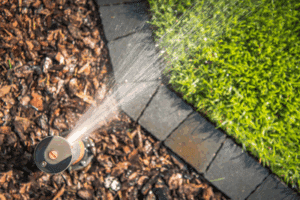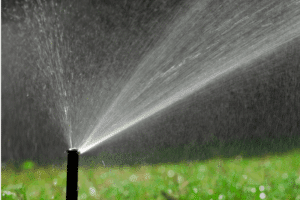If you’ve ever wondered how to adjust sprinkler zones to keep your lawn healthy without wasting water, you’re not alone. Many Cleveland homeowners struggle with dry patches in some areas and overwatered spots in others. A sprinkler system is only effective if it’s set up correctly, and the good news is, making adjustments is simpler than you might think.
With the right steps, you can fine-tune your system so every part of your yard, from flower beds to grass, gets the right amount of water.
Why Sprinkler Zones Matter
Sprinkler zones divide your yard into sections, ensuring each area receives the correct amount of water. Without proper adjustment, some areas may become overwatered, while others dry out, resulting in soggy soil, plant stress, or uneven growth. In Cleveland’s hot summers and long winters, balanced watering is key. Adjusting your zones helps conserve water, lower bills, and keep your lawn and garden healthy.
How to Adjust Sprinkler Zones Step by Step

Learning how to adjust sprinkler zones doesn’t require advanced skills it just takes some attention to detail. Here’s a step-by-step process to guide you:
1. Locate Your Control Panel
Most sprinkler systems are managed by a central controller, often installed in the garage or basement. This panel lets you manage which zones run, how long they run, and at what times. Take a few minutes to read through the manual or look up the model online so you know how to navigate the settings.
Getting comfortable with the controller is the first step to making the right adjustments for your yard.
2. Test Each Zone
Turn on each zone one at a time and watch where the water is going. Walk around your yard to check if sprinkler heads are aimed correctly, if water is reaching all areas, and if there are any leaks or weak sprays. This step also helps you spot hidden issues, like clogged nozzles or a broken sprinkler head that isn’t obvious at first glance.
Keep notes on what needs adjusting so you don’t forget once you move on to the next zone.
3. Adjust Spray Patterns
Sprinkler heads often have small adjustment screws or collars that control the spray direction, distance, and arc. Use a screwdriver to make minor changes so water covers the intended area without spraying sidewalks or driveways. It may take a little trial and error to get it right, so adjust gradually and re-test until the spray is balanced.
Proper spray alignment helps prevent wasted water and ensures even coverage.
4. Set Zone Run Times
Different parts of your yard may need more or less water. For example, flower beds may require longer watering cycles than shaded lawn areas. Adjusting the run time ensures each section gets the right amount of water without overdoing it.
A general rule is to water deeply but less often, which encourages roots to grow stronger and more resilient.
5. Schedule Watering Times
Cleveland’s climate makes early morning or late evening the best times to water, since cooler temperatures reduce evaporation. Program your controller to run zones during these times for the most efficient use of water. Avoid watering in the middle of the day when the sun is strongest, as much of the water will evaporate before it can soak into the soil.
Sticking to a consistent schedule will keep your lawn and garden healthier throughout the season.
Common Mistakes to Avoid

Even when you know how to adjust sprinkler zones, it’s easy to overlook small issues that affect your system’s efficiency:
- Overlapping Coverage: Too much overlap can cause pooling and runoff.
- Ignoring Wind: Sprinklers that spray during windy times waste water.
- Too Frequent Watering: Lawns don’t need daily watering—deeper, less frequent watering encourages stronger roots.
- Skipping Seasonal Adjustments: Cleveland’s weather changes throughout the year, so update your settings each season.
By keeping an eye out for these mistakes, you can avoid wasted water and keep your yard healthier.
When to Call a Professional
While most adjustments are simple, some issues require expert help. If you notice broken sprinkler heads, leaks underground, or a controller that isn’t working properly, it’s best to call a professional irrigation specialist. They can check the entire system, repair parts, and even upgrade your setup for smarter watering.
Conclusion
Knowing how to adjust sprinkler zones is a simple but important step in keeping your Cleveland lawn and garden healthy year-round. Small changes like testing each zone, adjusting spray patterns, and setting the right schedule can save water and lower your bills while giving your yard the care it needs.
If you ever run into issues like leaks, broken sprinkler heads, or controller problems, it’s a good idea to ask an irrigation professional for help. That way, you’ll know your system is running at its best and your yard will stay green and thriving in every season.
